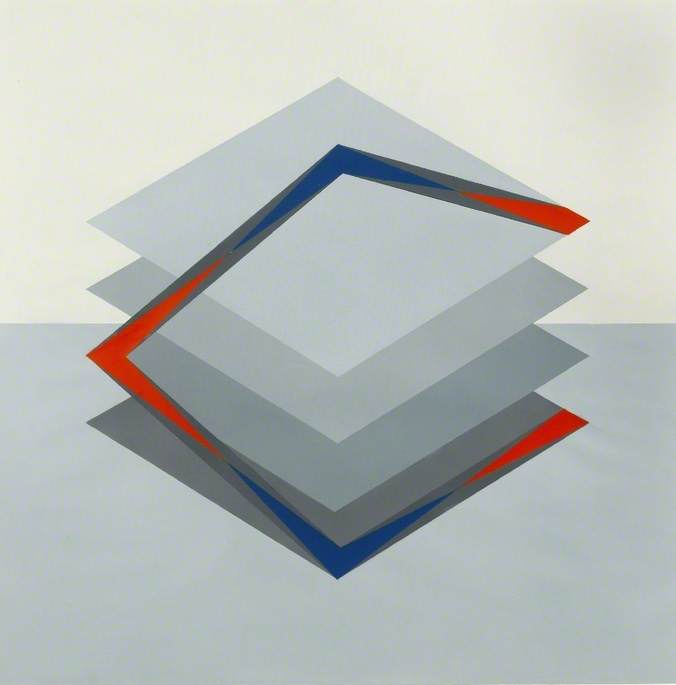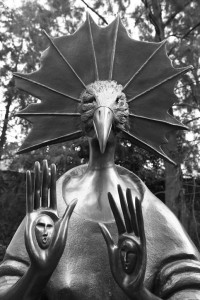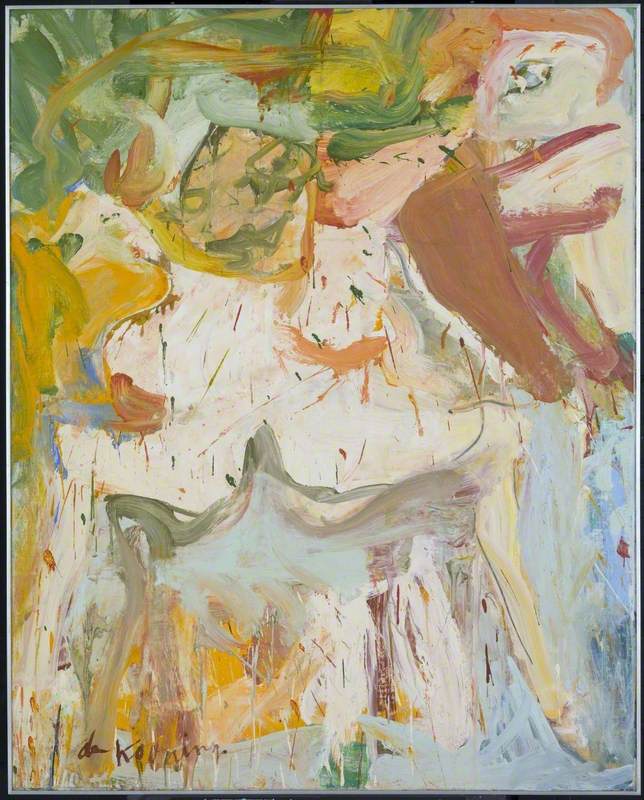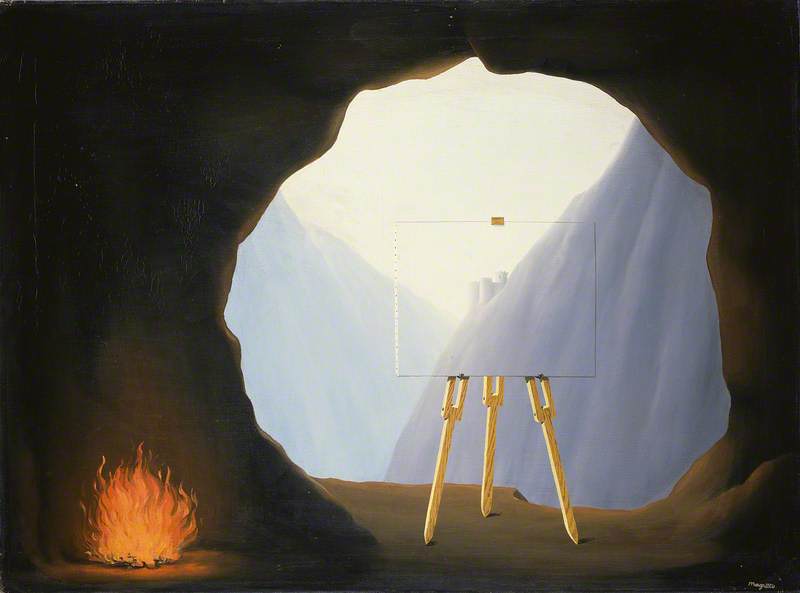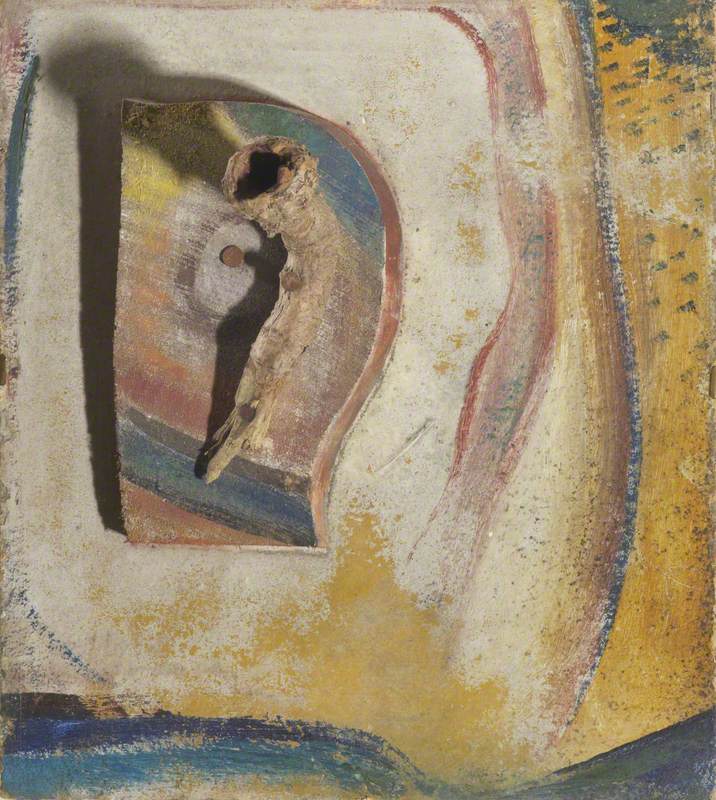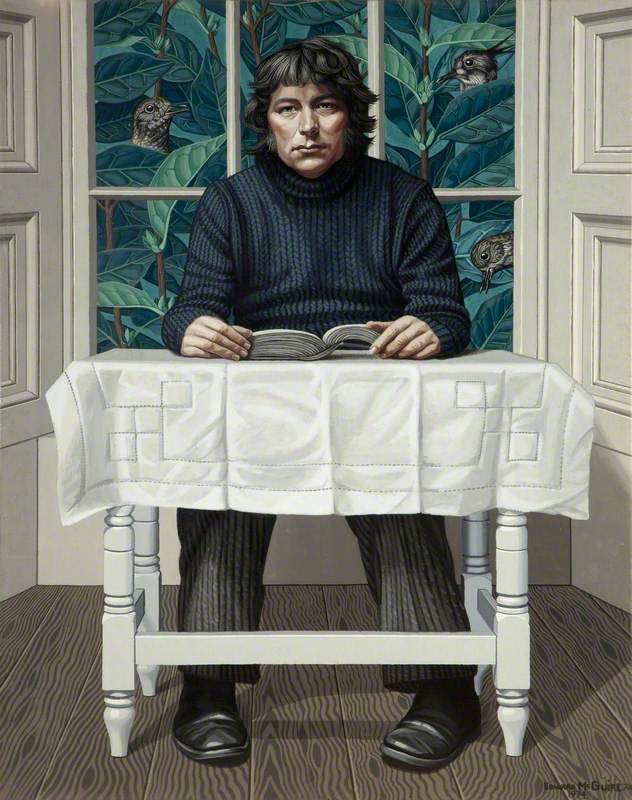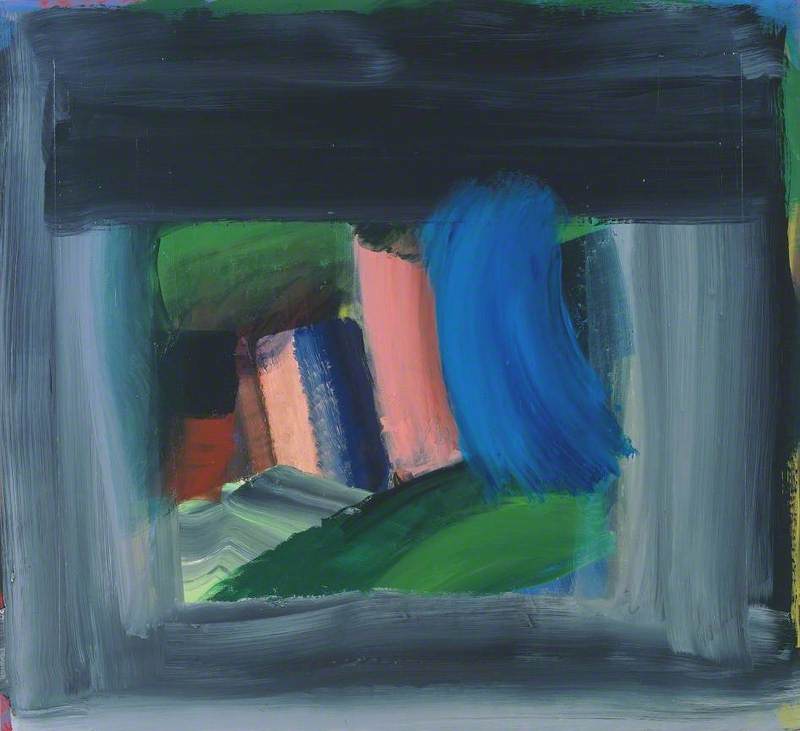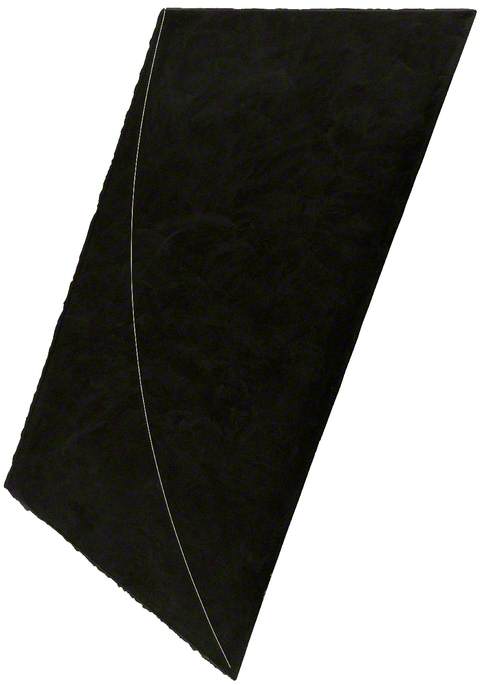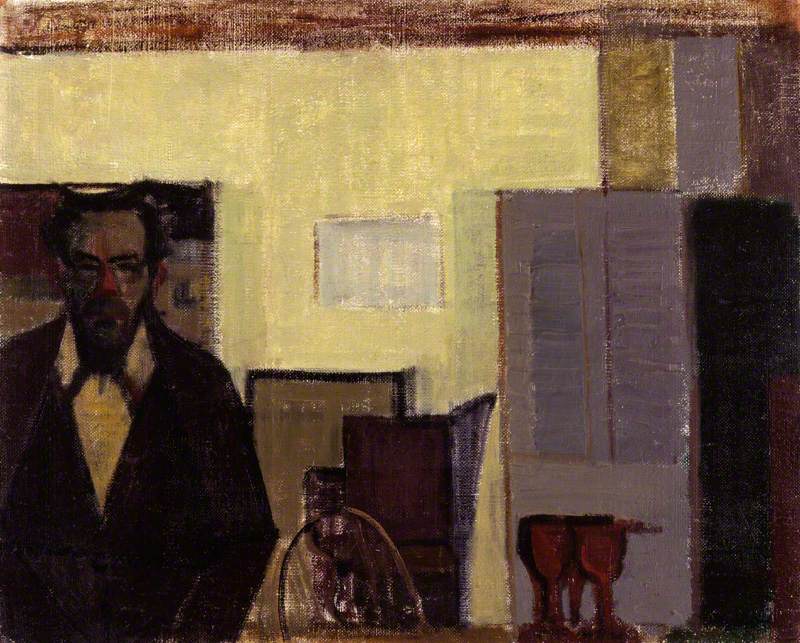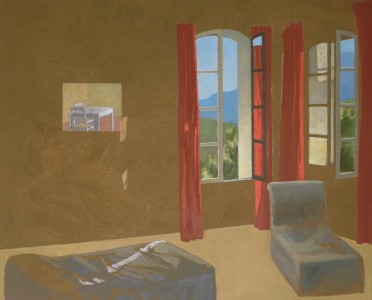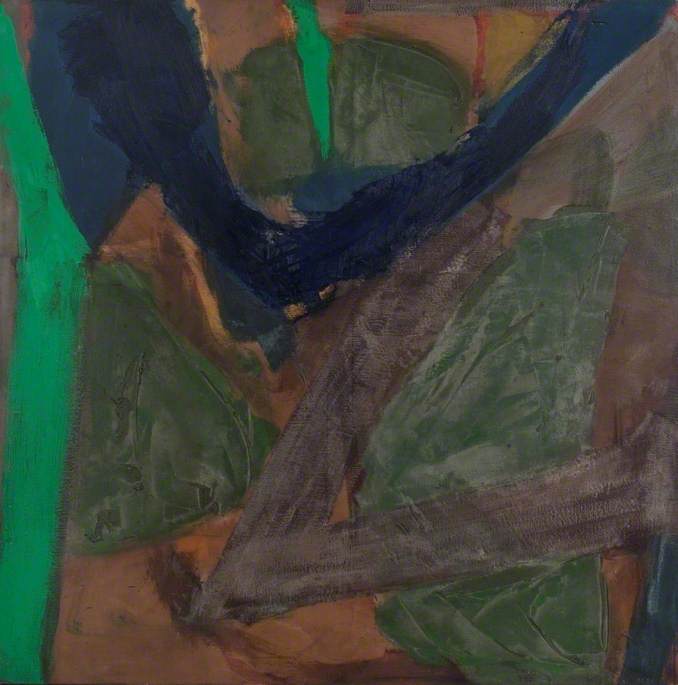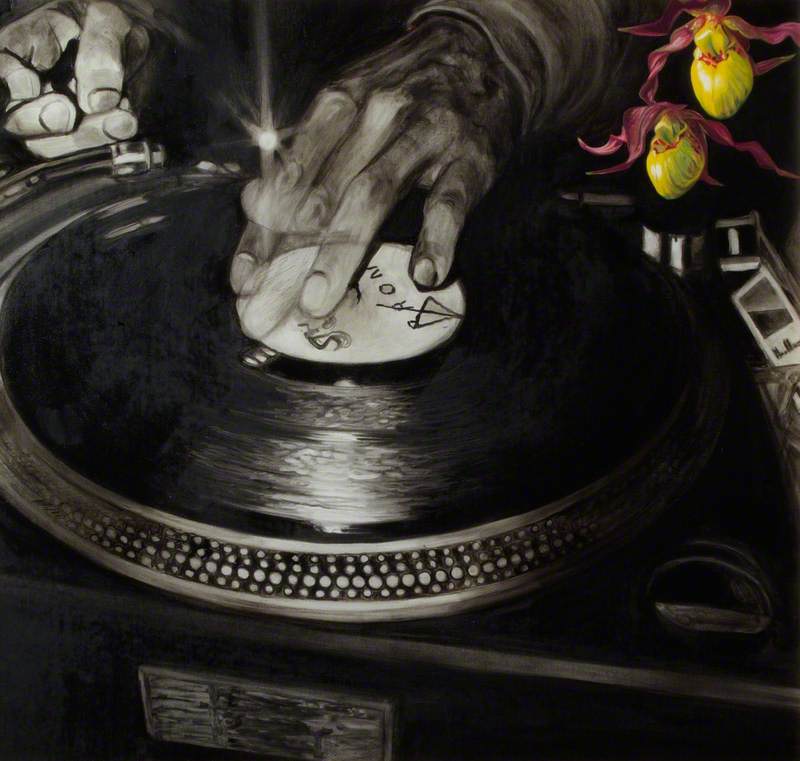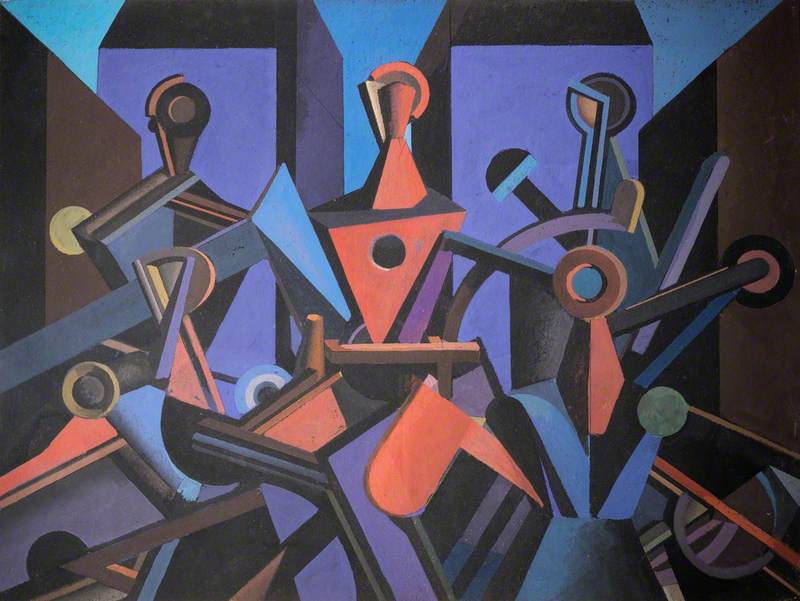Growing up, we get accustomed to the fact that certain things make sense in specific contexts: we know, for instance, that geometry, diagrams
The increasing desire for innovations in different lines of production and the rise in demand for new modern building construction had clearly influenced Constructivists, who believed strongly that it was time for art to do more than please aesthetically.
Compared to Expressionist paintings, Opening Movement appears rational, and certainly does not seem to express, or be expressive of, sentiment. Likewise, there is nothing to indicate that the geometric shapes carry a meaning beyond their visual appearance, as would have been the case with Cubist or Surrealist paintings. It is not figurative, and clearly not representational. So what is the painting about? To answer this question we need to understand the ideologies of the movement – British Constructivism – that define the contextual and formal qualities of the artwork in focus. By doing this, we will have the unique opportunity to take a peek beneath the surface of the painting and appreciate it fully.
By the early 1960s, British Constructivism had established itself officially as an avant-garde movement. This was a time when life in Britain was changing drastically and faster than anyone would have anticipated. Cars, home entertainment
For the artists who formed this movement – many of whom had a mathematical background – the traditional idea of composition meant scientifically based construction, predominantly influenced by architecture, instead of harmonious layout.
Similarly, in artworks belonging to this movement, the concept of beauty has been clearly extracted from the form, and has been attributed instead to the pleasure that derives from rational ideas; ideas that were conceived with the aim to express this new way of life and to influence its further development by creating a strong alliance between art and modern life.
As a Constructivist member, and by the time that she painted Opening Movement in 1976, Gillian Wise had been creating art with a penchant for science for over 20 years. The geometric forms that define the painting mark out the Constructivist approach, which aimed to create art that would demonstrate analytical precision. Equally, its predominantly achromatic appearance indicates that the artwork’s purpose is not decorative, but rather strictly rational and supremely methodological. Looking at Wise’s painting, our attention is mainly drawn to the distinct line of contrasting
However, we would be wrong to assume that this is simply an optical illusion that Wise is playing on us for her own amusement. On the contrary, it is a conceptually intricate design that aims to demonstrate the manifold ways in which materials and ideas can be interpreted. Thus, given that the proportions are left completely to our own evaluation, the structure shown in the painting could be very well understood as an idea for
Gillian Wise gives us a reason to reconsider what we know, and to question the fundamentals of such knowledge by proving that logic can be poetic and that there is a certain beauty to rational ideas.
Even though the painting promotes vigorous rationality, this need not mean that it is incapable of triggering our imagination. Instead, I would like to propose that there is also something poetic about Opening Movement. Compared to the descriptive inscriptions that Wise had chosen for most of her earlier works, such as
The two words used in the title correspond directly to organic life, which is forever evolving and always in motion. On an abstract level of thinking, we are prompted to perceive the elements of the painting as the graceful opening movement of a flower in bloom, and this imagining can stimulate our sense of scent. Alternatively, we might picture the spreading wings of a bird that is about to lift off the ground and fly; an action that we can almost hear.
As mentioned at the beginning, our instincts tell us that some themes and concepts are claimed as artistic while others are not. However, Gillian Wise gives us a reason to reconsider what we know, and to question the fundamentals of such knowledge by proving that logic can be poetic and that there is a certain beauty to rational ideas. Just like life and mathematics, art is full of possibilities, and so is the meaning of Opening Movement for each and every one of us.
Stefani Bednarova
